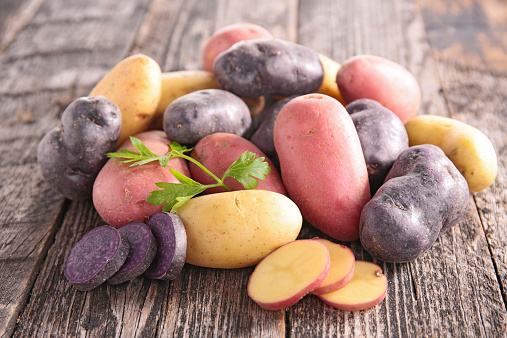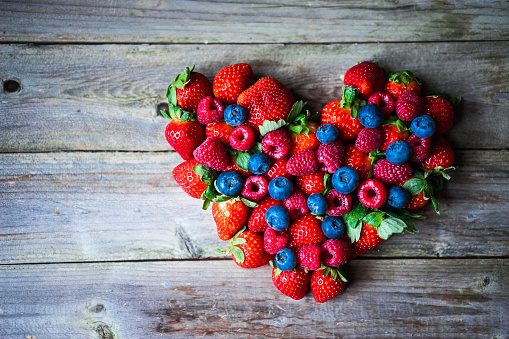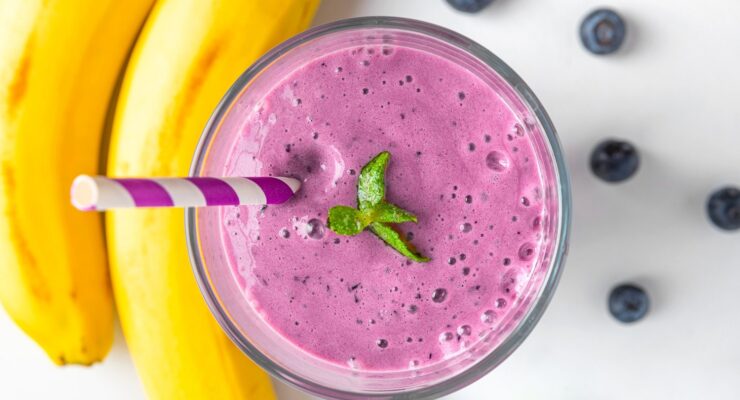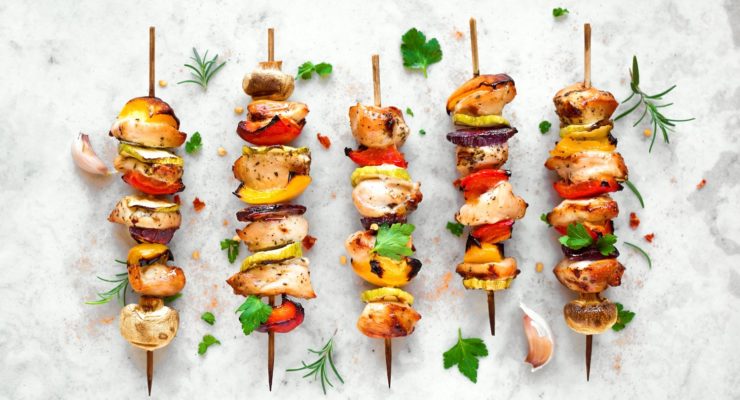10 Nutrients You’re Probably Neglecting
Article posted in: Diet & Nutrition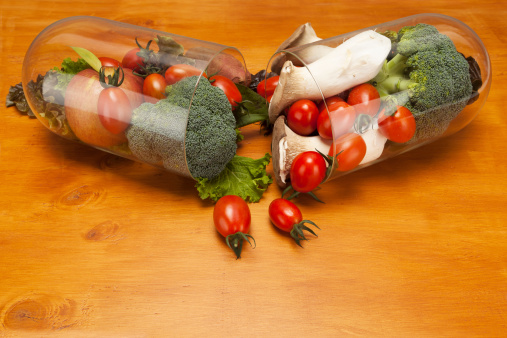
You may not know exactly what micronutrients are, but if you’re getting enough of them in your diet, they’re helping you see, protecting your skin, shielding you from infection, strengthening your bones, keeping your heart healthy and may even be mounting a defense against cancer somewhere in your body.
Micronutrients are largely vitamins, minerals and a few other dietary nutrients that you need in small quantities to live. That’s right—you can’t live without them. You can’t live without macronutrients either. They’re the major dietary components, such as protein, carbohydrates and fat, that supply your body with energy in the form of calories. They’re called “macro” because you need much more of them than you do vitamins and minerals. Add water to that and you have the basic menu for human survival.
Some micronutrients are harder to get through food than others, particularly if you’re dieting, are vegetarian or vegan, or have food intolerance or allergy issues. For example, folate, by law, is added to grain products in the US, but if you have celiac disease—a serious intolerance to gluten, a protein in grains—you may be missing out on this B vitamin unless you’re eating loads of peas, beans and nuts. Likewise, if you don’t eat eggs, you may become deficient in biotin, which can lead to everything from hair loss to seizures to neurological problems. Eggs are one of the richest sources of this vitamin (vitamin B7).
The panel that formulates the Dietary Guidelines for Americans every five years (the latest was 2015) found that many of us consume below average and even below adequate levels of certain micronutrients, including vitamins A, D, E, C, iron, potassium, choline, magnesium and calcium. Most of us are also low on fiber. We’re in that situation because we tend to avoid too many healthy food groups, such as vegetables and fruits, whole grains and dairy, the panel wrote.
Here are the nutrients you may be missing out on, and how to get them:
1. Vitamin A is critical for vision, your immune system, reproduction and communication between your cells. The best source are liver and fish oil, but more palatable choices are sweet potato (1403 milligrams for one), spinach, carrots, cantaloupe, peppers, mangoes, milk and eggs. You need between 900 to 1300 micrograms per day, according to the National Institutes of Health.
2. Vitamin C is a vitamin your body uses to make repairs in tissue, cartilage, bones and teeth, plus it’s an antioxidant that helps prevent DNA damage from free radicals. These nasty little molecules are the result of your body breaking down food or being exposed to environmental toxins like cigarette smoke. Since water-soluble vitamins like C dissolve in water—and we’re mostly water—you need to replenish your supply every day. Adults need anywhere from 75 to 120 milligrams a day, according to the National Institutes of Health. One cup of orange juice has 93 milligrams, but a half-cup of sweet red peppers has even more—95 milligrams. Other good sources: Green pepper, kiwifruit, strawberries, grapefruit juice, Brussels sprouts and broccoli.
3. Vitamin D is the sun vitamin: It’s not in the sun, but ultraviolet rays help release the vitamin D we store in our skin. It’s also available in a few foods such as fatty fish (swordfish has 447 IUs and tuna, 154 IUs), but mainly from dairy foods fortified with the vitamin. Vitamin D helps your body absorb calcium, which is vital for your bones and teeth. It helps control cell growth and reduce inflammation, which may help protect you from the two top killers, heart disease and cancer. Adults should get anywhere between 600 and 800 IUs per day.
4. Vitamin E is a powerful antioxidant that protects the body against free radical cellular damage. It also bolsters the immune system to fight bacteria and viruses and it prevents blood clots by widening the arteries, according to the U.S. National Library of Medicine. Look for this vitamin in the dieter’s best friend, nuts and seeds. One ounce of dry roasted almonds contain 6.8 milligrams. Vitamin E is also in vegetable oils and green leafy vegetables. Half a cup of broccoli contains 1.2 milligrams. Teens 14 and up and adults need 15 milligrams daily, according to the National Institutes of Health Office of Dietary Supplements.
5. Calcium is what keeps your skeleton and teeth strong and healthy. It’s the most abundant mineral in your body, says the National Institutes of Health Office of Dietary Supplements. You also need calcium for keeping your arteries supple to encourage blood to flow smoothly throughout your body. Adults need anywhere from 1,000 to 1,300 milligrams a day. One eight-ounce cup of plain, nonfat yogurt contains 415 milligrams; dairy foods are one of the best sources for calcium in the diet. Enriched tofu, calcium-enriched cereals and juices, as well as canned fish with bones are also good sources. Leafy green veggies also contain calcium—kale has 100 milligrams per cup of chopped greens.
6. Choline isn’t a vitamin but a vitamin-like nutrient, according to the Linus Pauling Institute’s Micronutrient Information Center at Oregon State University. The National Institutes of Medicine recognized it in 1997 as “an essential nutrient.” Your body needs it to create neurotransmitters, the substances that carry messages between your brain and the rest of your body. It’s vital for the processes by which your body builds DNA and detoxifies your liver. The recommended daily intake is 425 milligrams for women and 550 for men. There are 356 milligrams in one three-ounce serving of liver and 147 milligrams in one large egg. Toasted wheat germ has 202 milligrams per cup. Other food sources: scallops, salmon, chicken, Atlantic cod, shrimp, Brussels sprouts and broccoli.
7. Iron is part of hemoglobin, a protein that carries oxygen from the lungs through the body. It also helps your muscles use and store oxygen. Your body absorbs two to three times more iron from animal sources—that’s meat—than it does from plants, according to the Academy of Nutrition and Dietetics. But some veggies, grains and legumes are a good sources, particularly if you consume them with vitamin C foods, which helps your body absorb iron. Eat lots of beans, dark leafy greens like spinach, fortified breakfast cereal and whole grain and enriched breads.
8. Magnesium is part of a trio including calcium and potassium that plays a role in hundreds of functions in the body, from keeping arteries working properly so blood pressure doesn’t soar, to regulating blood sugar. In fact, magnesium transports calcium and potassium ions across cell membranes to ensure that your muscles contract and your heart beats at a steady rhythm. Like calcium, much of the magnesium in your body is in your bones. Adults need anywhere from 310 to 420 milligrams. An ounce of almonds contains 80 milligrams. Other nuts are also good sources. So are leafy greens. One half cup of cooked spinach has 78 milligrams. Other sources: Soy milk, black beans, edamame, peanut butter, whole wheat bread and avocado.
9. Potassium helps move nutrients into your cells and sweep waste out. It also serves the go-between for nerves and muscles to communicate. You’re probably thinking bananas are the top food choice, but actually, sweet potatoes have more potassium than just about any foods: 694 milligrams in one sweet potato. White beans, tomato paste, white potatoes, plain nonfat yogurt, halibut, tuna and soybeans, as well as most vegetables, are good sources, according to the Dietary Guidelines for All Americans.
10. Fiber is a part of plant foods that isn’t digestible. And that’s a good thing: Fiber travels more slowly through your digestive system and keeps you feeling fuller longer. It also helps keep you “regular.” There’s also evidence that a high-fiber diet may reduce the risk of obesity, type 2 diabetes and cardiovascular disease. Adults need 14 grams of fiber per 1,000 calories consumed. That’s at least 25 grams for women and 38 grams for men, but according to The Dietary Guidelines panel, most Americans get only 15 grams per day. The best sources of dietary fiber are beans (legumes), such as black beans, white beans, Navy beans and kidney beans. Whole grains, bran, and fruits and vegetables are also good sources. Get more fiber facts here.



